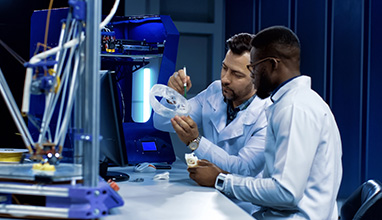If you are considering a position as a computer programmer, you may be curious as to what you could expect as regards the working conditions: your environment, your daily tasks, and the like. Below, we take a look at the typical tasks and environments of a computer programmer in today’s career world.
Environment
Though it may be expected, the environment of a professional computer programmer is often the same in today’s market: in front of one of many computers throughout the course of the day-as this is your function: to plan, code, and communicate with computer systems and applications for optimum efficiency in businesses and/or government. This said, while you may find yourself in front of a computer most of the day in a computer programming position-no matter the level-based on various factors of industry, company flavor, and your particular specialty or position; you may not.
In the case of a medical industry computer programming position, for example, you might probably be spending half your day between your office and the various medical admin offices in the building. If you work for yourself, perhaps, you spend a good deal of your time traveling to clients and spending the rest on their various computer systems. Moreover, if the company you work for on a full time basis allows for remote work, maybe you work from a home computer-making the endless hours in front of a computer seem less severe. Lastly, your work environment could be affected by how much your company needs your services-as in the case of a technical consultant hired full time, but used on a mostly on-call basis. They would be able to call you in at any time of the day or night to fix computer problems, but then a remainder of the rest of time; you might be free.
Tasks
The tasks that you may have in a regular day as a computer programmer, though highly affected by the specialty and industry for which you work, has a basic standardized route of duty to it. Often a computer programmer will work a 40 hour work week in house at a company or government institution, and work on a wide range of projects-to include: introducing new applications or systems, maintaining existent ones, and troubleshooting computer systems or applications problems when they arise.
More specifically, this means a lot of goal setting, preparing of program/system flow charts, analyzing current programs and equipment, and communicating to departments and supervisor the results of this analysis and maintenance in a manner that is understandable to a non technical entity. In larger companies, often a computer programmer will receive detailed descriptions of project needs from a systems analyst and/or software engineer. Once this is understood, the computer programmer then goes ahead and writes the coding needed to implement whatever computer systems or applications goals are the directive of the engineer or analyst.






